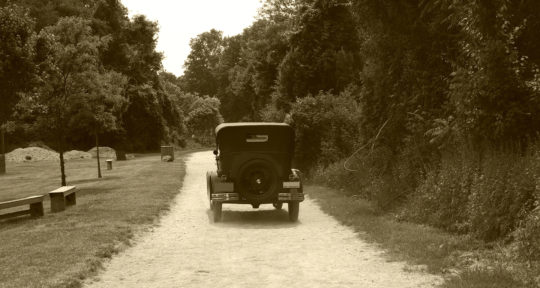Hurricane season stretches from June 1 through November 30 each year. This encompasses both the peak summer travel season and popular fall holidays. At least one hurricane makes landfall in the U.S. nearly every year, bringing wind speeds of more than 160 mph, along with trillions of gallons of rain. Florida, Texas, Louisiana, the Carolinas, and other Atlantic and Gulf coast states are generally the most impacted. If your vacation plans include traveling to—or through—locales that are vulnerable to extreme weather, you’ll need to take extra steps to ensure you’re protected.
Understand your trip cancellation policies
Preparing for a potential hurricane starts during your vacation planning process. When booking accommodations or pre-paid activities it’s important to understand your destination’s inclement weather policies. Whenever possible, you’ll want to select options that allow cancellation for any reason until 24 to 48 hours before arrival. This gives you a chance to monitor the situation and change your mind without penalty.
Less flexible cancellation policies do often make exceptions for hurricanes; however, cancellations are generally given only under certain conditions, and may not go into effect until a formal hurricane warning is issued. Be sure you understand what costs might be lost should your plans shift, and consider purchasing travel insurance if needed. Note that once a storm is named, you typically can’t purchase insurance that covers weather-related cancellations, so make sure you plan ahead.

What to do during a forecasted tropical storm
Meteorologists constantly monitor systems as they begin to form in the ocean and make ongoing predictions about storm paths. Models give you a general idea of potentially impacted areas, but even experts will disagree on the exact path a storm will take. Precise timing is also hard to pinpoint, with predictions frequently changing in the days leading up to landfall.
Many travelers remain optimistic as they monitor upcoming storms, waiting as long as possible to make a call on whether or not to move forward with their vacation plans. While it’s tempting to hold out hope that your trip won’t be affected by a storm, it’s better to err on the side of caution and reschedule or cancel your plans as soon as you see a storm brewing. While this may seem disappointing, spending your vacation battling high winds, storm surges, rainfall, and other hazards is likely not the dream getaway you were envisioning.

If you do find yourself traveling through a destination in the days leading up to a major storm, follow weather apps to stay up-to-date and be prepared to adjust plans quickly. Know that traffic can be slow going as cars take to the road to collect supplies and head for safe evacuation spots.
You’ll want to keep lots of bottled water and high-protein snacks on hand as these items, as well as other essentials, are in short supply during hurricane season. Have an emergency preparedness kit ready in your vehicle with pre-charged, external battery banks, a weather radio, a portable jump starter, a paper map, and a first aid kit. Bring along extra prescription medication if needed. If you’re traveling with a pet, make sure you account for extra supplies and have copies of medical records.
RVers should take extra caution
For RVers who are visiting a storm-prone area, there are several other considerations to keep in mind. When selecting a campsite, choose an elevated spot away from large trees. Plan your evacuation route and consider sticking to destinations that offer easy access to a major roadway. Staying in places like the Florida Keys, which has a single road in and out, presents a traffic challenge when inclement weather necessitates a move.


If a tropical storm is in the forecast, know that it’s not safe to ride it out in your RV. Many RV parks shut down in the event of a storm, and may remain closed following a hurricane to allow time for cleanup. Because traveling in an RV requires extra time to pack up, and you’ll move more slowly once on the road, you need to get out long before a storm is headed your way. Hurricanes cover a large area, wreaking havoc on everything they pass along the way, and you’ll need to allow ample time to travel well outside the outer bands of the storm to avoid finding yourself in a vulnerable position.
Should evacuation prove impossible, locate a shelter to stay at throughout the storm. If you have pets, look for a pet-friendly shelter or safe boarding facility. Secure everything outside your RV to prevent it from taking flight and place any important documentation and valuable items inside waterproof containers. Check your RV insurance to make sure you’re covered for hurricane damage and, if there’s time, make a video or take photographs of everything inside your RV before heading to your shelter.
What to expect post-storm
Even after a hurricane has passed, you might want to hold off on your travel plans for a little longer. Signs of a heavy storm can be present for many days—or longer—after a hurricane has passed through an area, and your desired vacation activities may remain unavailable for some time. Many buildings will be boarded up, hotels will be full of evacuees, power outages may remain prevalent, and services throughout the area will be in limited supply.

Should you find yourself traveling through an area that has recently experienced a major storm, exercise caution while driving. Be prepared to encounter downed branches and power lines, non-functioning streetlights, and flooded roadways. Carry extra gas when traveling through storm-ravaged areas as shortages are common, and avoid driving through water, which can stall your engine and cause irreparable damage.
Following a storm, crews will be working hard to clean up debris, assess the damage, and make needed repairs. Whenever possible, refrain from adding a greater strain on the local infrastructure and look for news reports to guide you on when the region is ready to receive visitors again. After all, you’ll enjoy your well-earned getaway much more if you reschedule it for a sunnier season.








